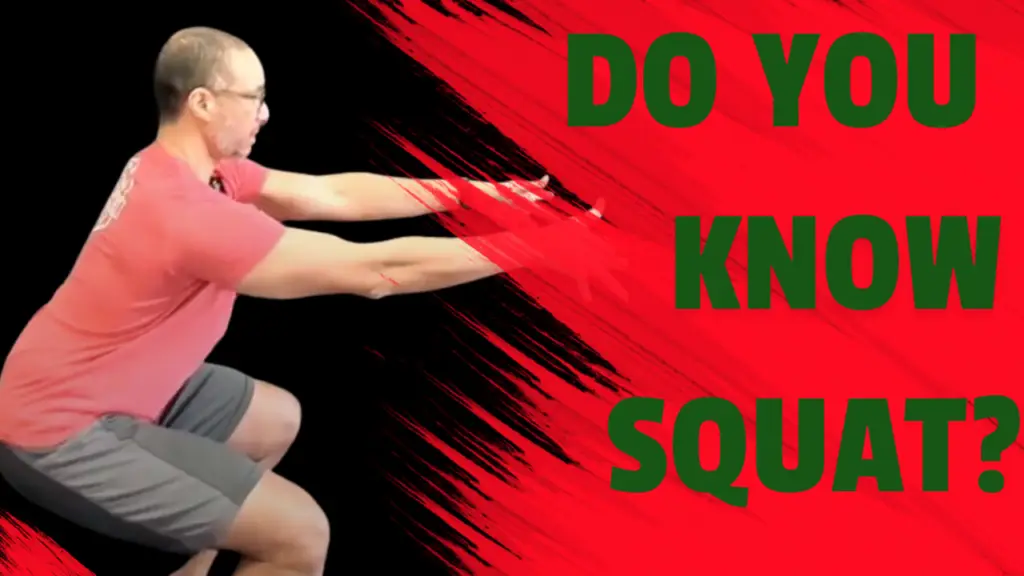The squat exercise is one of the seven primal movements. But unlike the others, a properly executed squat is the only one that can directly improve your posture.
Most people learn to squat the wrong way. Fitness classes, trainers, and online videos often pass down bad form like it’s tradition. Challenges like “100 squats a day” only reinforce poor patterns. They don’t teach you how to move—they teach your body how to compensate.
That’s a problem.
Click the image to watch the full video.

Why the Squat Exercise Matters So Much
A squat isn’t just for building legs or glutes. It’s a global movement that involves your whole body working together. In fact, it’s made up of multiple smaller systems working in harmony—from your pelvic floor to your jaw.
Done right, it’s one of the most powerful tools you have for long-term strength, mobility, and posture.
Done wrong, it becomes a slow leak—wearing down your body over years until the damage is finally too loud to ignore.
Most People Are Taught the Squat All Wrong
When I started training back in my teens, I was told to arch my back, stick my butt out, and look up. It felt powerful—but it placed massive stress on my lower back and neck. I didn’t feel pain for years. But by the time I hit 35, that form had helped cause a spinal issue and sciatic pain.
That’s how compensation patterns work. You don’t feel them until they’ve done damage.
And unfortunately, a lot of fitness systems still teach that exact form today.
The Squat and Posture: A Unique Relationship
Unlike bending, pushing, or pulling, the squat uses and improves your posture—if done correctly.
Your postural system is made up of:
- The Plumb Line (ear, shoulder, hip, knee, ankle alignment)
- The Gravity Line (a 4-degree cone rising from your pubic bone)
The squat interacts with both. If your plumb line is off, squatting can make things worse. But if you squat with awareness and alignment, it actually helps reinforce your posture inside that gravity cone.
What It Takes to Do a Proper Squat Exercise
The squat is built from many parts. Each part needs to function independently before it can function together.
Here’s what that means:
✅ The Beam Phenomenon
Your torso needs to move like a solid beam—no wobble. That requires training your:
- Pelvic floor
- Abs (especially lower abs)
- Diaphragm
- Lats
- Pecs
- Fascia in the mouth and throat
✅ Foot and Ankle Mechanics
Your feet are your foundation. A weak or collapsed arch (especially at the navicular bone) throws off everything above. You may need arch support or proper shoes when lifting heavy.
✅ Pelvic Tuck and Knee Drive
A good squat is knee-dominant. That means knees move first—not hips.
At the same time, keep your pelvis tucked and chin tucked to stay in the beam. This requires both abdominal strength and fascial flexibility in the back.
If your soleus and calves are tight, your heels will lift and stop your knees from driving forward. So you may need to stretch and strengthen your calves to get full range.
Learning to Squat Means Slowing Down
If you’re constantly focused on performance or fat loss, you’re not giving your body the time it needs to learn proper form. And in a class environment, correcting your form often isn’t the priority.
That’s like trying to learn typing by mashing keys as fast as possible without learning the keyboard.
It’s not a matter of willpower—it’s just bad input. And bad input = bad output.
Good Squat = Good Life
Learning how to do a proper squat gives you a relationship with your body.
You’ll learn where you’re tight, where you’re weak, and where you’ve been compensating without even knowing it. And when you address those things, your body responds.
You get stronger. You feel better. You age slower.
Want Help With Your Squat?
I’ve helped thousands of people reconnect to their bodies through correct, holistic training. Here’s how you can start:
- 📘 Download the free eBook on mobility, posture, and pain relief
- 📅 Book a consultation to get 1-on-1 feedback on your squat and your training
You’ve been given a body that can last 90+ years. The squat exercise is one of the best ways to take care of it.
Let’s make sure you’re doing it right.
it’s not just working out, it’s building a foundation for a better life.
Find out more @

Leave a Reply